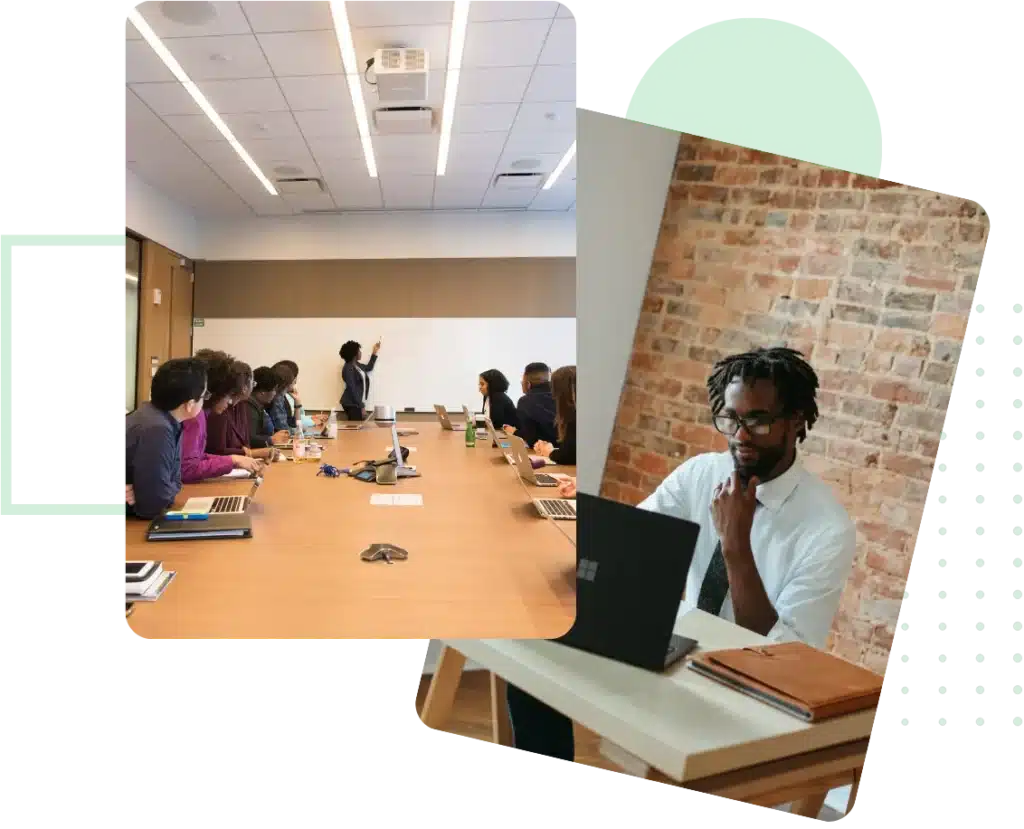Know how to improve the Customer Experience of
THEIR ORGANIZATION
This training will enable you to acquire solid knowledge and skills regarding customer segmentation, the customer journey, and the development of a customer-centric culture within your company.

DISCOVER OUR TRAINING
Objectives
- Developing the ability to effectively lead a Customer Experience improvement project from A to Z (definition, implementation, evaluation)
- Adopt a complete methodology and operational tools to carry out a multi-channel Customer Experience project
- Know how to implement an exclusive method for observing and measuring Customer Experience.
Intra
Our in-house sessions allow you to customize the training to your specific context and challenges, with specific anchoring options.
Contact us for a proposal tailored to your needs.

Content
- 5 video sessions of 2 hours or 2 days in person
- 3 hours via e-learning modules before each session
Training access time: The training can start 8 days after the agreement is signed or the OPCO support agreement is received.
Customer reviews*
5/5 (732 reviews)
Success rate*
100%
* These indicators are updated each year using consolidated data from previous years.
Source of indicators: List of trained learners/knowledge validation quiz/training evaluation
Last updated figures: 15/05/2024










Program
Training schedule
The concept of Customer Experience and the Customer persona
- Understanding the concept of Customer Experience and its components
- The Customer Persona
The consideration pyramid
- The needs and motivations of clients
- The consideration pyramid
The customer journey and moments of truth
- What is a customer journey?
- Building Your Customer Journey
- Identify moments of truth.
Measuring the Delivered Customer Experience
- Match the journey to the persona
- Observe in the field
Defining improvements and innovations in Customer Experience
- Identify levers for individual interactions.
- Identify potential levers within the company.
After the training
- Knowledge validation questionnaire

Before each session
Participants complete the corresponding e-learning module.

During the session
The trainer facilitates with quizzes, individual or collaborative exercises, challenges, and role-playing.

After each session
Participants complete practical exercises relevant to their own context.
TRAINING MODALITIES
Public
Anyone in charge of a project related to Customer Experience, such as project manager roles in: customer relations, customer experience, marketing, CRM, customer loyalty, etc.
All our training courses are accessible to people with disabilities. Contact us for specific support tailored to your needs.
Prerequisites
A positioning questionnaire is sent before the start of the training to assess the level before entering the training.
Evaluation
At the end of the training, participants will receive a questionnaire to validate their learning and establish the extent to which the training objectives have been achieved.
The results of this questionnaire will be provided to the client at the end of the training, during a post-training follow-up meeting (debriefing).
MANY TRAINING COURSES AVAILABLE
Also discover
Training to acquire the keys to successful remote customer communication in order to meet customer requirements.
Training to improve customer segmentation, customer journey, and the development of a customer-centric culture within your company.



